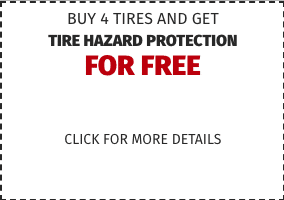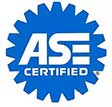Tire alignment, also known as wheel alignment, is an essential aspect of vehicle maintenance that ensures your vehicle’s wheels are correctly aligned with each other and the road. Proper alignment not only extends the lifespan of your tires but also improves handling and fuel efficiency while enhancing overall safety. But how often do your tires need to be realigned? Keep reading to explore the factors that affect tire alignment and get recommendations for maintenance.

Understanding Tire Alignment
Tire alignment refers to the adjustment of the angles of your vehicle’s wheels to meet manufacturer specifications. There are three main angles to consider:
- Camber: This refers to the inward or outward tilt of the wheels when viewed from the front. An improper camber angle can lead to uneven tire wear.
- Toe: Toe alignment measures the angle at which the front of the tires point in relation to the centerline of the vehicle. Misaligned toe angles can cause rapid tire wear and affect steering stability.
- Caster: Caster alignment pertains to the forward or backward slope of the steering axis when viewed from the side. Proper caster alignment ensures stability and straight-line tracking.
Factors Affecting Tire Alignment
Several factors can affect the alignment of your vehicle’s tires:
- Normal Wear and Tear: Over time, various components of the suspension and steering system can wear down, leading to misalignment. Potholes and rough road conditions can accelerate this wear.
- Hitting Obstacles: Striking curbs, potholes, or other obstacles can quickly throw your vehicle’s alignment out of whack. If you’ve recently had such an incident, it’s advisable to get your alignment checked.
- Suspension Upgrades: Modifications to your vehicle’s suspension system, such as lifting or lowering, may necessitate a realignment to ensure proper tire contact with the road.
- New Tires: Whenever you replace your tires, it’s a good practice to have the alignment checked. New tires on misaligned wheels can lead to uneven wear and reduced tire life.
Recommended Maintenance Intervals
While there’s no set rule for how often your tires need to be realigned, it’s generally a good idea to include alignment checks as part of your regular vehicle maintenance routine. Here are some recommended intervals:
- Annually: Many automotive experts recommend having your tire alignment checked at least once a year, even if you haven’t noticed any handling issues. This can help catch any minor misalignments before they lead to significant tire wear.
- After Significant Events: After hitting a pothole, curb, or any substantial obstacle, it’s crucial to have your alignment checked immediately. Even if your vehicle seems fine, underlying misalignment issues can affect safety and tire longevity.
- When Replacing Tires: Whenever you invest in new tires, it’s an excellent opportunity to have your alignment checked. Ensuring proper alignment with fresh tires maximizes their lifespan and performance.
- When Experiencing Handling Issues: If you notice your vehicle pulling to one side, steering wheel vibration, or uneven tire wear, these are signs that your alignment may be off. In such cases, seek a professional alignment inspection promptly.
Consult with a Professional
Ultimately, the frequency of tire alignments depends on various factors, including your driving habits and road conditions. To ensure your vehicle’s safety, tire longevity, and optimal performance, consult with Ken’s Automotive & Transmissions. We’ll assess your vehicle’s alignment and recommend adjustments as needed. Contact us today to schedule an appointment.














